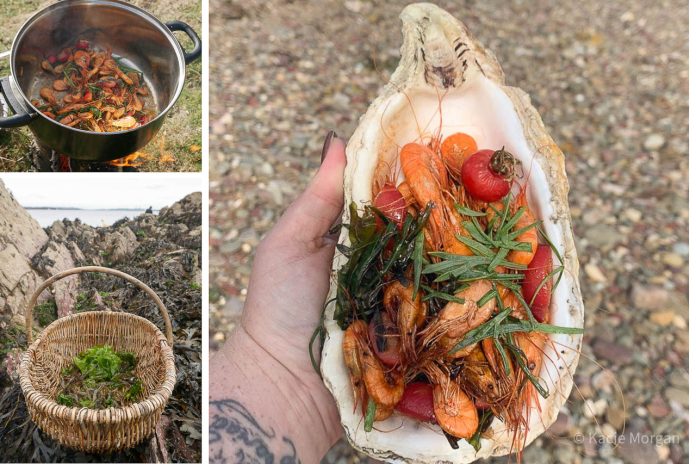Coastal foraging is an exciting and rewarding way to gather wild food from the shore, but it also comes with its own set of risks. Whether you’re foraging for seaweed, shellfish, or edible plants, safety should always be a top priority. Understanding how to navigate the shoreline safely can help you avoid potential hazards and make your foraging trips more enjoyable.
Before heading out, it’s essential to familiarize yourself with the basics of coastal foraging and learn about the specific safety precautions you should take to ensure a successful and risk-free experience.
1. Check the Weather and Tides
One of the most important factors in coastal foraging is timing. Always check the tide schedule before you go, as low tide provides the best access to marine plants and animals. Be aware of when the tide is due to come back in, so you don’t get trapped in an area that could quickly become submerged. In addition, weather conditions can change rapidly along the coast, so it’s crucial to keep an eye on the forecast and avoid foraging during storms or strong winds.
2. Wear Proper Footwear and Clothing
The coastal terrain is often slippery and uneven, making it easy to lose your footing. Wearing sturdy, non-slip footwear like waterproof boots or shoes with good traction will help prevent slips and falls. Dress in layers and choose water-resistant clothing to stay comfortable, as the shore can be cold and wet even on sunny days. Gloves can also be useful to protect your hands from sharp rocks, shells, or plants.
3. Stay Aware of Your Surroundings
When foraging along the coast, it’s important to stay aware of your environment. Always keep an eye on the water and the changing tides. Rocky outcrops, tide pools, and slippery seaweed can make walking tricky, so move slowly and carefully. Watch for waves that could unexpectedly crash onto the shore, especially when working near the water’s edge.
4. Know What to Avoid
While many coastal plants and sea creatures are safe to harvest, some are toxic or protected by law. Always bring a reliable field guide to help you identify edible species, and avoid foraging in areas where pollution or contamination might be present. Certain shellfish can contain harmful toxins, especially after heavy rains, so be mindful of where you gather and check local advisories.
5. Forage with a Buddy
Coastal foraging is best done with a partner. Not only is it more enjoyable, but it also adds an element of safety. If an accident or injury occurs, having someone with you can make a big difference in getting help quickly. Plus, working together can make it easier to cover more ground and find a greater variety of wild foods.
6. Bring a Fully Charged Phone
Even if you’re in a remote area, it’s a good idea to bring a fully charged phone with you. In case of emergencies or unexpected changes in the weather, being able to call for help could be life-saving. Be aware, though, that some coastal areas may have limited cell service, so consider telling someone your plans before you go.
7. Respect Wildlife and the Environment
While coastal foraging can provide an abundance of food, it’s important to respect the local ecosystem. Avoid disturbing wildlife, such as nesting birds or sea creatures, and never over-harvest from any one area. Sustainable foraging practices ensure that these environments remain healthy and continue to provide food for future generations.
Conclusion
Coastal foraging can be an amazing experience, but it requires careful planning and an understanding of the risks involved. By checking the weather and tides, wearing the right gear, and staying aware of your surroundings, you can ensure a safe and enjoyable trip. Remember to forage responsibly, leaving the environment as you found it, so that it remains a thriving habitat for all.
